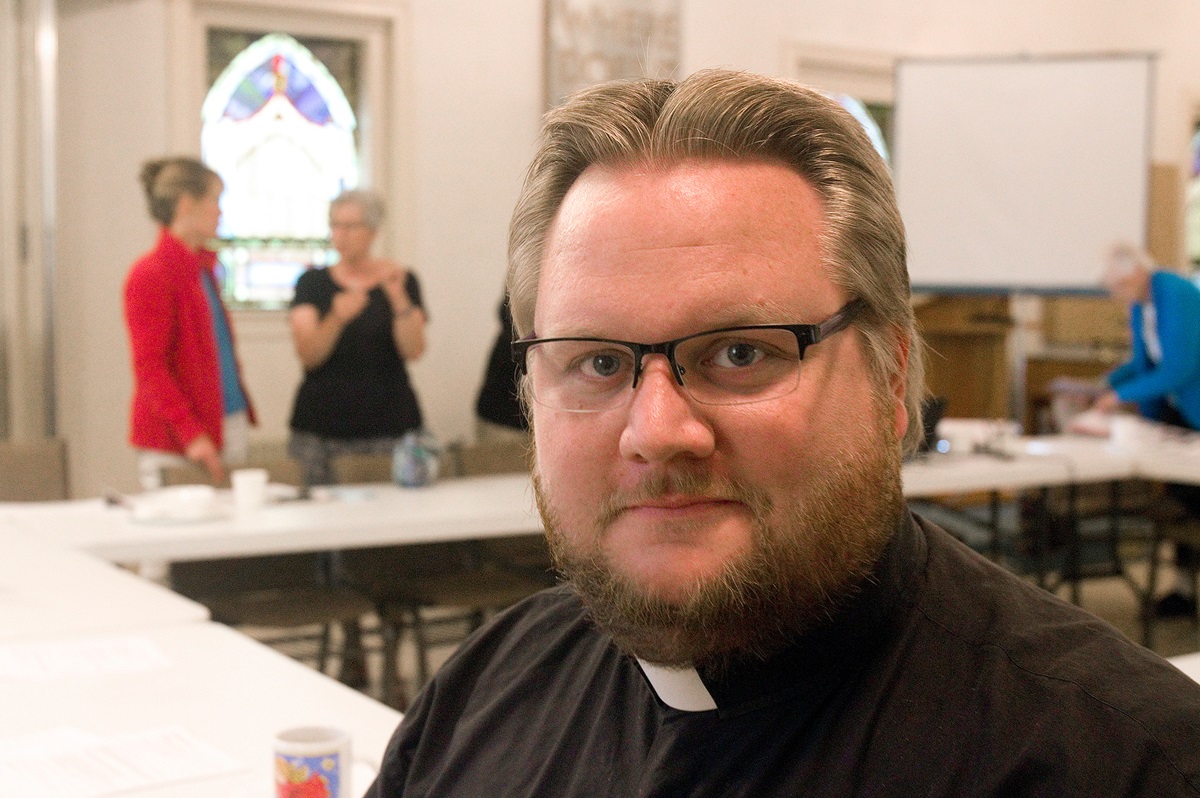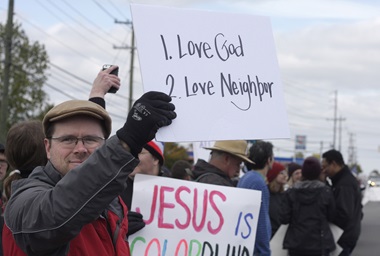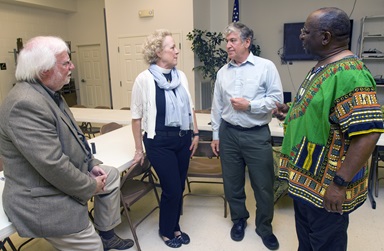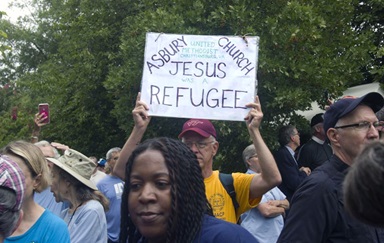Members of the Charlottesville Clergy Collective, including United Methodist ministers, will be a major force in the efforts to maintain peace as the city marks the first anniversary of a “Unite the Right” rally that turned deadly.
"The CCC has been very invigorated by the current events," observed the Rev. Gary Heaton, senior pastor of First United Methodist Church in Charlottesville. "By virtue of being interfaith, it is very tolerant."
It is uncertain whether a potential for violence, such as occurred during last year’s rallies, will recur. On Aug. 12, 2017, the rally held by white supremacists to oppose the planned removal of a Robert E. Lee statue from Emancipation Park became violent.
Heather Heyer, 32, was killed when James Alex Fields Jr. intentionally drove into a crowd of counter-demonstrators. A group of white supremacists also severely beat Deandre Harris, an African-American counter-protester, with metal poles.
The 92 members of the clergy collective, representing 20 faith traditions, hope this year will be more peaceful. United Methodists are the second most-represented faith tradition with eight clergy members.
Originally formed in response to the 2015 shootings at Emanuel African Methodist Episcopal Church in Charleston, the Charlottesville Clergy collective later responded to the July 8 Ku Klux Klan rally and the Aug. 12 Unite the Right rally in 2017.
"Over the past year, the CCC has been very intentional about encouraging and developing relationships across the many faith traditions,” said the Rev. Phil Woodson, associate pastor for outreach and witness at First United Methodist Church.
"Religious groups in our area — we have grown closer together and have worked to better define our mission and purpose."
The collective has provided opportunities for education and discussion of themes that are related to racism without being specific to the actions of the white supremacists. Those activities have included:
- Forming a reading group to discuss the book, "Waking Up White," by Debby Irving.
- Working with Monticello, Thomas Jefferson's home, and the Thomas Jefferson Foundation to identify and explore the intersections between Charlottesville’s history of slavery and its current context.
- Planning an event to mark the 400-year anniversary of the first slave ships to arrive in Jamestown, Virginia.
- Supporting community screenings and facilitating dialogues about the documentary, “I’m Not a Racist, Am I?”
- Supporting three men of color from Charlottesville who were unjustly charged with crimes related to the events of Aug. 12, 2017.
- Sponsoring a free lecture and training by Christian Picciolini, a former national white supremacist leader, to help the community prepare for future white supremacist incursions.
First United Methodist Church will again serve as a safe space on Aug. 11-12 this year, as it did on Aug. 12, 2017. The church is located one block from Market Street Park, formerly Lee Park, which was the focal point of the 2017 disturbances.
No organization, either white supremacist or pro-tolerance, has been issued a rally permit for the park this year. It is likely that any possible clashes would occur at other places in Charlottesville.
The reaction of First United Methodist Church during the clashes last Aug. 12 is a source of pride for many United Methodists. The congregation used its privilege as a church to open its doors to provide a place that offered snacks and water and spiritual sustenance to pro-tolerance counter-demonstrators.
The church was forced to lockdown four times during the day to prevent white supremacists from entering. The supremacists responded by brandishing guns and other weapons and attempting to rip open the shuttered doors and windows.
The Rev. Robert Lewis, pastor of Hinton Avenue United Methodist Church in Charlottesville, was in First Church’s parking lot during the disturbances a year ago.
"After the July 8 Ku Klux Klan rally, we became aware of the potential for violence at the August demonstration," Lewis explained. "And, we also became aware that the police would not protect us."
Police inaction on Aug. 12 in the face of the white supremacists was a major factor permitting the violence, according to the Heaphy Report, which was commissioned by the city of Charlottesville.
"We all had to stand together," Lewis said. "We were able to organize our resistance due to the relationships that we had developed through the CCC. We stood in support of Temple Beth Israel. We provided the safe space at FUMC."
A white supremacist group found itself in the midst of pro-tolerance demonstrators in First Church’s parking lot, Lewis recalled. When he approached a police officer to complain, the officer responded, "What do you want me to do about it?" Lewis said. At least two of the pro-tolerance demonstrators were struck by flagpoles that the white supremacists carried, with no response from police, Lewis said.
The Rev. Isaac Collins, who became pastor of Charlottesville's Wesley Memorial Church in July, said that the Charlottesville Clergy Collective “was a major factor” in his interest in serving in Charlottesville.
"If it weren't (for the collective being) interfaith, it would be very weak,” he noted. “The white supremacists target Jews and Muslims, so an interfaith response is the strongest reaction."
Lord is a photojournalist based in New York City and Ivy, Virginia.
News Media Contact: Linda Bloom, 615-742-5470 or [email protected]. To read more United Methodist news, subscribe to the free Daily or Weekly Digests.
Like what you're reading? Support the ministry of UM News! Your support ensures the latest denominational news, dynamic stories and informative articles will continue to connect our global community. Make a tax-deductible donation at ResourceUMC.org/GiveUMCom.




